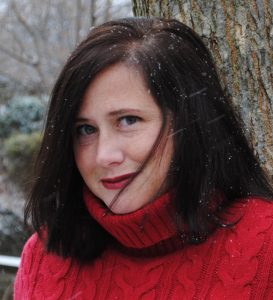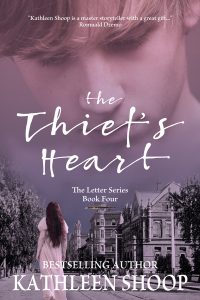Crossing Genres: A Wild Writing Path
 By Kathleen Shoop, PhD
By Kathleen Shoop, PhD
Writing across genres. What does that mean? How do you do it well? Well it turns out the answer is, “It depends.” First of all, we can consider writing across genres within individual books and series. And then there’s the notion of having a multi-genre career.
Let’s take a look at books themselves that are multi-genre within each. This type of book is often driven by one dominant genre like romance or thriller but there are elements of other genres rolled into the story. Outlander won the RITA award given by Romance Writers of America. But the series is also devoured by readers who love historical fiction, adventure, science fiction and fantasy.
So how does an author create multi-layered books like this? For some, it’s purposeful. At least partly so. Abigail Drake’s The Enchanted Garden Café and The Hocus Pocus Magic Shop (Southside Story Series), took a winding path to publication. “At first I considered Hocus Pocus to be New Adult. But the agent said it needed to be romance. So I took the protagonist’s cheating on her fiancé. No cheating in romance! But then an editor indicated she could sell it as cozy so I added those elements. Then a year later that same editor suggested I shape it into a contemporary romance because cozy’s were dead.”
Drake continued to develop the book and liked the changes she made each time. Hocus Pocus and the series now straddles women’s fiction, with strong romance and magical realism elements. The devoted cadre of readers grows daily. But one reviewer remarked that she wasn’t sure what she was reading—was Hocus Pocus a cozy? Contemporary Romance? Women’s fiction? Drake took the review in stride. “She was right. It had been predominantly all of those things at one time or another.”
Other readers embrace the layers of genre-crossing elements because it keeps things moving. Drake admits readers often have a subconscious expectation, if not a stated one, for what they’re reading. And the differences can be subtle. In romance there’s no cheating and if a character does the reader will assume that person’s not her true love interest. But, if the same story is aimed at a literary or women’s fiction audience, the character has room to cheat and redeemed.
Some readers will read in any genre as long as the heart of the story is clear, as long as the pulse of its center can be felt throughout the reading of it. The book, Autobiography of Red, is a combination of poetry and prose, set in contemporary times and drawing from Greek Mythology. And though there were times while I was reading that I had to slow down and reread and I wondered what was actually happening to this delicate red-winged little boy, I kept going. The language, the tale that it centered on—the coming of age of a boy who doesn’t fit in anywhere was compelling and universal while utterly unique.
Career across Genres
“You need to specialize, because a publisher can’t afford to try and reach a whole new audience with every single book. As an author, neither can you.” Rachel Gardner—Agent
What readers want genre-wise and what editors and agents want are not always the same thing. In the end authors want their books in the hand of readers. Marketing helps that happen.
When it came to my first book, The Last Letter it took me a while to find the words to convey what was at the heart of the story. It’s about a woman and her family who lost it all. They’re holed up in the side of a hill, literally living in a dugout. The novel is rife with environmental obstacles and difficult plot turns. But I knew that wasn’t what would sell the book to reader. When marketing it, I focused on the story between mother and daughter. Yes, it was clear it was set in the dusty, pioneering old west, but it’s heart was the fractured mother-daughter relationship and the repairing of it—women’s fiction. No matter how you publish, you need to sort through what it is your story is conveying to readers and then market that.
Some things to consider when looking at:
Each Novel:
- Before you write or after (if you’re a pantster)—determine the predominant genre that shapes the novel.
- Educate yourself on reader expectations regarding the elements of the genres in your novel and apply them to the unfolding story.
- Determine what the heart-story is—this is what readers latch on to whether the book is science fiction, romance, or historical fiction.
Career Goals and Expectations:
- Consider the pros and cons of crossing genres within a book and across your career
- Consider whether you want to publish traditionally or independently. Does the idea of your book being on physical shelves across the country outweigh your desire to write the books you most want to create, the books you know readers want?
- When contacting agents or marketing your published book be clear about the dominant genre of your book and orient your query toward it.
—
Bestselling author Kathleen Shoop holds a PhD in reading education and has more than 20 years of experience in the classroom. She writes historical fiction, women’s fiction and romance.
Shoop’s novels have garnered various awards in the Independent Publisher Book Awards (IPPY), Eric Hoffer Book Awards, Indie Excellence Awards, Next Generation Indie Book Awards, Readers’ Favorite and the San Francisco Book Festival.
Kathleen has been featured in USA Today and the Writer’s Guide. Her work has appeared in The Tribune-Review, four Chicken Soup for the Soul books and Pittsburgh Parent magazine. She lives in Oakmont, Pennsylvania with her husband and two children. For more information, visit her at: www.kshoop.com.
THE THIEF’S HEART
 Des Moines, 1892. After losing their promised inheritance, the Arthur family’s luck finally changes. An extraordinary woman, Violet Pendergrass, provides refuge for them to rebuild their broken lives. Or has she?
Des Moines, 1892. After losing their promised inheritance, the Arthur family’s luck finally changes. An extraordinary woman, Violet Pendergrass, provides refuge for them to rebuild their broken lives. Or has she?
Handsome fifteen-year-old Tommy Arthur has one foot in manhood and the other dragging up the rear of his boyhood years. He strives to protect and provide for his family, but turning to booze when scared or worried creates as many problems as solutions. Unsure of who he can trust, fiery redhead Pearl Riverside challenges and excites him at every turn, softening his heart toward the idea that goodness exists in the world.
Tension builds between Tommy and his mother as her affection for a generous man increases. At the same time, distance grows between Tommy and his twin sister, Katherine, as each chooses secrets over family. Violet Pendergrass demands more from Tommy and he begins to question her motives.
When disaster strikes for Tommy’s little sister, Yale, the actions of a sinister judge, a crooked minister, and the infamous charlatan, Dreama, are revealed. Facing more jailtime as vigilante mobs form, the clock runs down on Tommy’s chance to take responsibility for his own choices. Is it too late for him to save his family, to open his heart and fully love those who need him as much as he needs them?
Category: Contemporary Women Writers, How To and Tips























